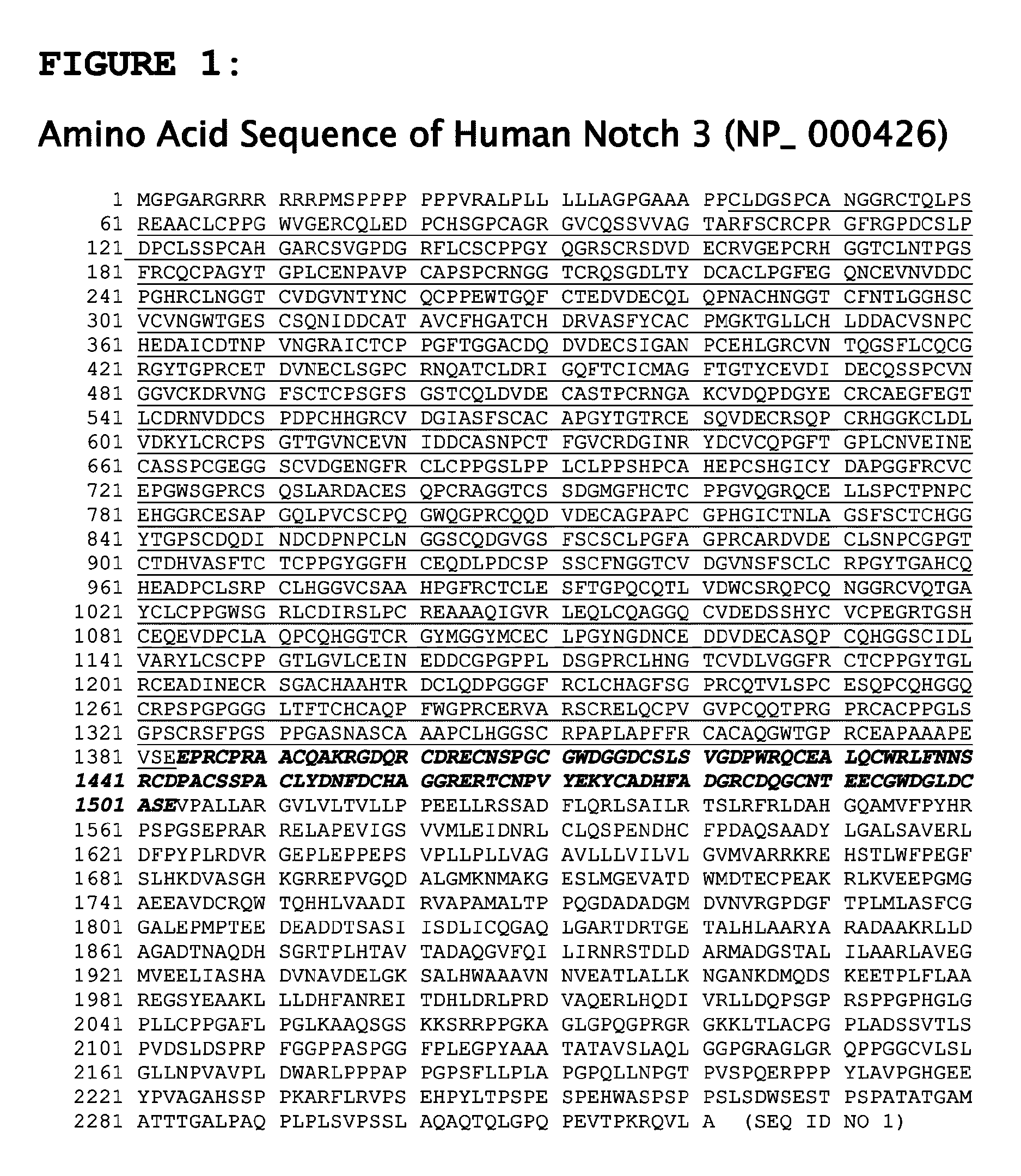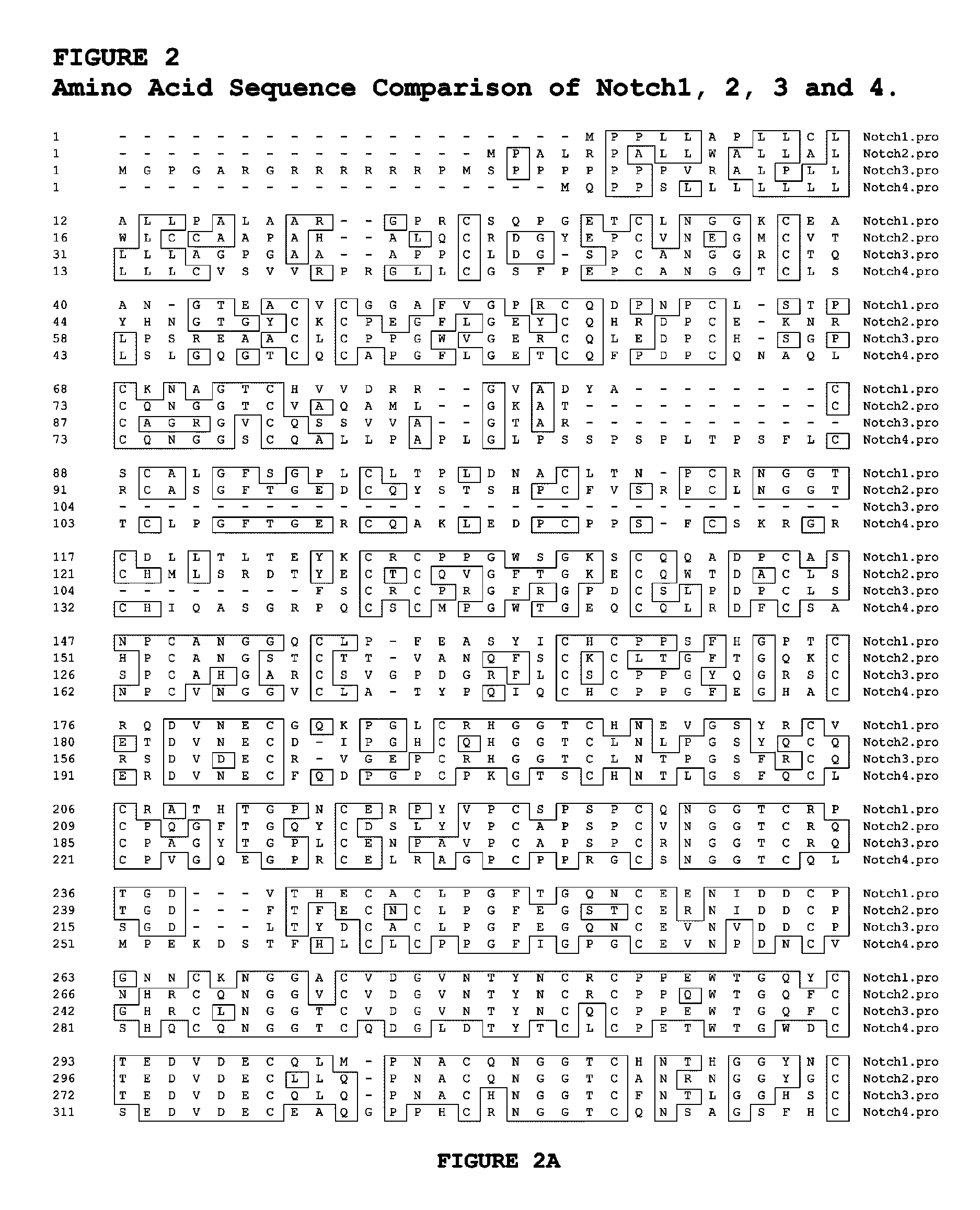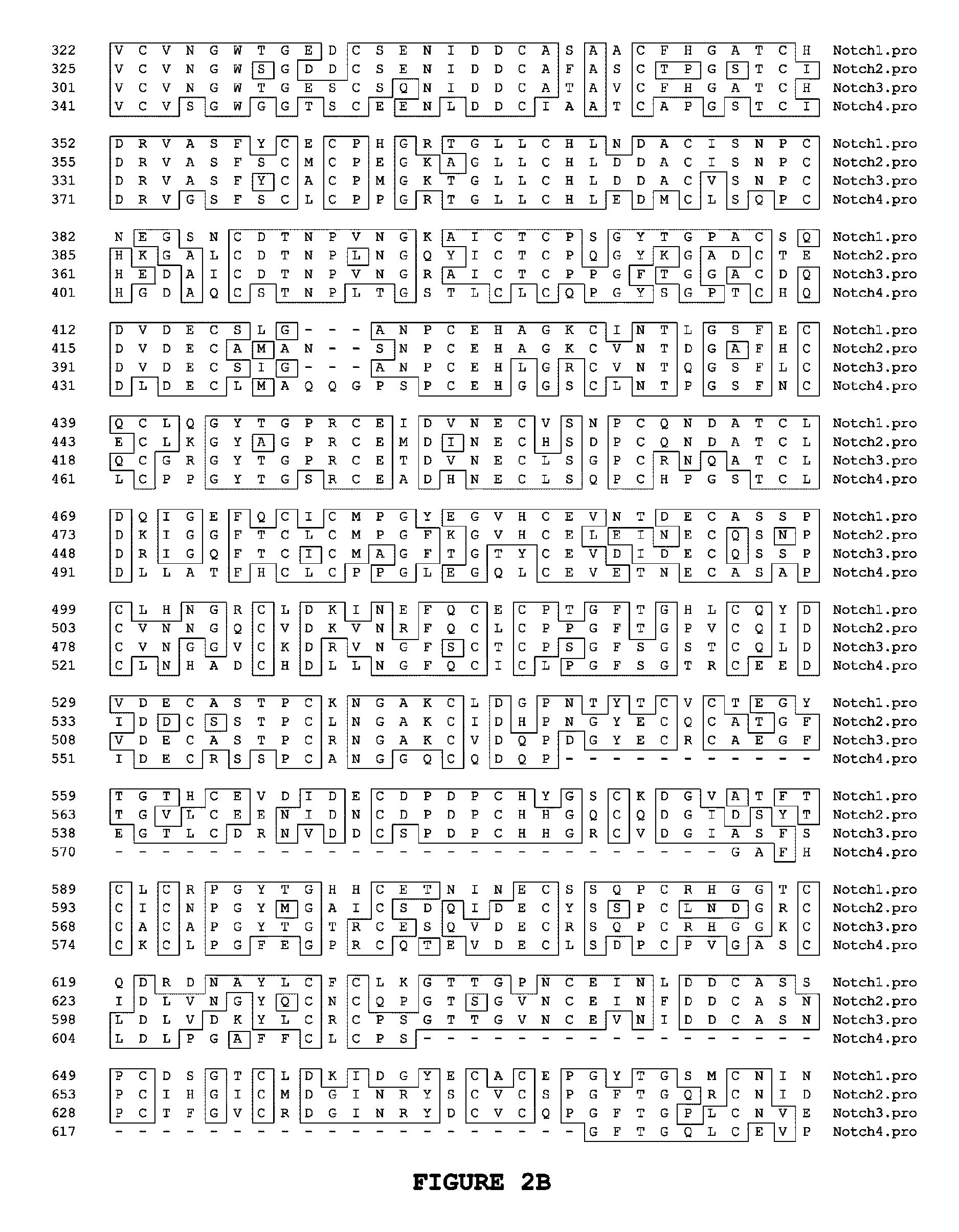Antagonist anti-Notch3 antibodies and their use in the prevention and treatment of Notch3-related diseases
an anti-notch3 antibody, anti-agonist technology, applied in the direction of drug compositions, immunological disorders, metabolism disorders, etc., can solve the problem of unclear how ligand binding facilitates proteolytic cleavage events
- Summary
- Abstract
- Description
- Claims
- Application Information
AI Technical Summary
Benefits of technology
Problems solved by technology
Method used
Image
Examples
example 1
Generation of Immunogen: Notch3 Extracellular Domain-Fc Fusion Protein
[0188]Anti-Notch3 monoclonal antibodies that specifically bind to the LIN12 / dimerization domain (herein after “LD”) of human Notch3 were generated using a recombinant Notch3-Fc fusion protein as immunogen comprising Notch3 LD fused to a gamma 1 Fc region at the carboxy terminal end. Specifically, the immunogen comprised amino acid residues 1378 to 1640 of Notch3 LD (See FIG. 1) and human γ1Fc fusion protein (Notch3 LD / Fc). A control antibody was generated comprising the Notch3 EGF repeat region from amino acid residues 43 to 1377 (designated 255A-79).
[0189]Notch3 protein sequence was analyzed using an internet-based research software and service (Motif Search). Human liver and pancreatic RNAs (Ambion, Inc. Austin, Tex.) were used as templates to synthesize the first strand of cDNA using a standard commercially available cDNA synthesis kit. The cDNAs encoding the Notch3 LD and the EGF repeat region were PCR-amplifi...
example 2
Generation of Anti-Notch3 MAbs
[0196]Male A / J mice (Harlan, Houston, Tex.), 8-12 weeks old, were injected subcutaneously with 25 μg of Notch3-EGF / Fc or Notch3-LD / Fc in complete Freund's adjuvant (Difco Laboratories, Detroit, Mich.) in 200 μl of PBS. Two weeks after the injections and three days prior to sacrifice, the mice were again injected intraperitoneally with 25 μg of the same antigen in PBS. For each fusion, single cell suspensions were prepared from spleen of an immunized mouse and used for fusion with Sp2 / 0 myeloma cells; 5×108 of Sp2 / 0 and 5×108 of spleen cells were fused in a medium containing 50% polyethylene glycol (M.W. 1450) (Kodak, Rochester, N.Y.) and 5% dimethylsulfoxide (Sigma, St. Louis, Mo.). The cells were then adjusted to a concentration of 1.5×105 spleen cells per 200 μl of the suspension in Iscove medium (Invitrogen, Carlsbad, Calif.), supplemented with 10% fetal bovine serum, 100 units / ml of penicillin, 100 μg / ml of streptomycin, 0.1 μM hypoxanthine, 0.4 μM ...
example 3
Cell-Based Binding Assays for Anti-Notch3 MAbs
[0201]The cell-based binding assays used to characterize the anti-Notch3 MAbs required cloning a full-length of human Notch3 open reading frame into a vector, in this case PCDNA™ 3.1 / Hygro (Invitrogen, Carlsbad, Calif.). The Notch3-coding region was synthesized by RT-PCR using human liver tumor RNA (Ambion, Inc., Austin, Tex.) as a template. The final plasmid construct, Notch3 / Hygro, expressed a full-length Notch3 protein as depicted in FIG. 1. A stable cell line expressing Notch3 was generated by transfection of Notch3 / Hygro plasmid construct into 293T cells (ATCC No. CRL-11268) using a LIPOFECTAMINE™ 2000 kit following the same procedure as described in Example 1. After transfection, the cells were cultured in DMEM growth medium overnight, then reseeded in growth medium with 200 μg / ml hygromycin and cultured for 12-14 days. Well-isolated single colonies were picked and grown in separate wells until enough clonal cells were amplified. S...
PUM
| Property | Measurement | Unit |
|---|---|---|
| pH | aaaaa | aaaaa |
| time | aaaaa | aaaaa |
| pH | aaaaa | aaaaa |
Abstract
Description
Claims
Application Information
 Login to View More
Login to View More - R&D
- Intellectual Property
- Life Sciences
- Materials
- Tech Scout
- Unparalleled Data Quality
- Higher Quality Content
- 60% Fewer Hallucinations
Browse by: Latest US Patents, China's latest patents, Technical Efficacy Thesaurus, Application Domain, Technology Topic, Popular Technical Reports.
© 2025 PatSnap. All rights reserved.Legal|Privacy policy|Modern Slavery Act Transparency Statement|Sitemap|About US| Contact US: help@patsnap.com



